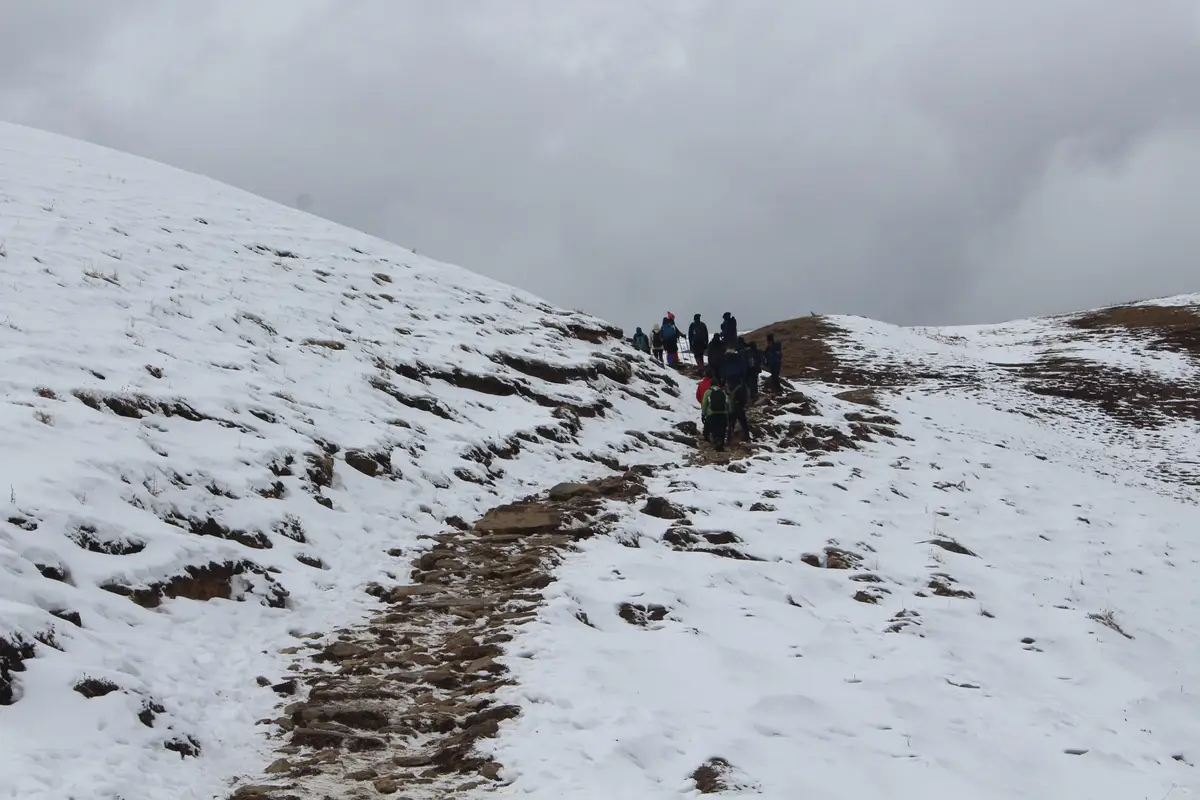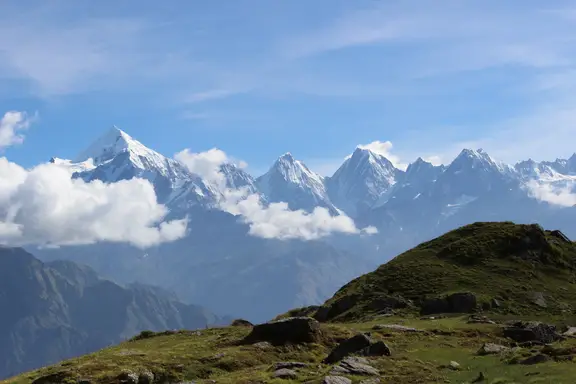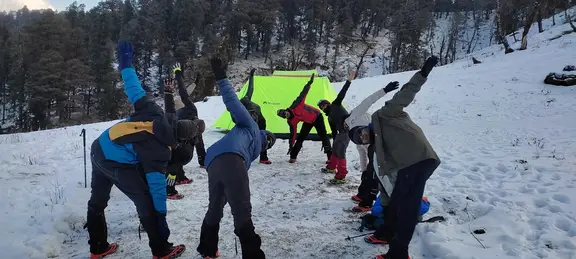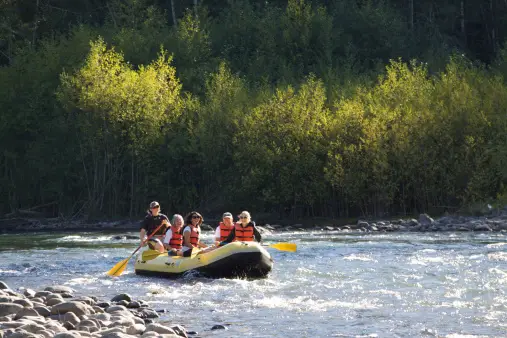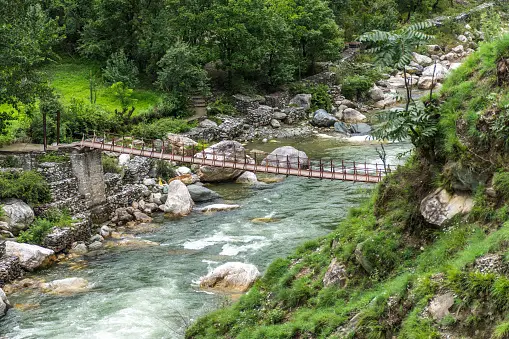Why Do My Hands Swell While Trekking? Causes and Precautions
As human beings, it is natural for us to love being outdoors. And what if outdoors involves going hiking, walking, and trekking to beautiful locales around the world?
That’s a double distinction indeed! But at times we are in for a surprise! Our beautiful excursion can get interrupted with some obstacles that are easily prevented with some precaution and care. Today, let’s talk about hand swelling or swollen fingers while walking. It is a very common occurrence while trekking.
But, why does this swelling happen? Once you know the causes, it is easier to prevent it! Let’s explore-
Some common reasons for stiff and swollen hands
Swelling in fingers during walking or hiking is a more common problem than you might think. According to statistics, one in four people experience this problem regularly. They may have swollen hands or fingers even while indulging in routine activities like walking their dog or taking evening or morning walks, but this problem may aggravate more during outdoor hikes/treks.
There are many causes for it, like cold weather, any sudden change in climate, or a heavy load. But, the most common cause is the buildup of fluid in your extremities. This may also cause puffy eyes at high altitude and puffy face after hiking.
But, what causes the buildup of this fluid? Let us find out together.
You may also like : Tips for a good night's sleep in tents while trekking
1. Reduced blood flow-
During exercise or any vigorous physical activity, the heart pumps blood faster to different working muscles of your body. During trekking, many more muscle groups are involved, other than the muscles of your hands and fingers. For this reason, the blood flow to hands and fingers is reduced.
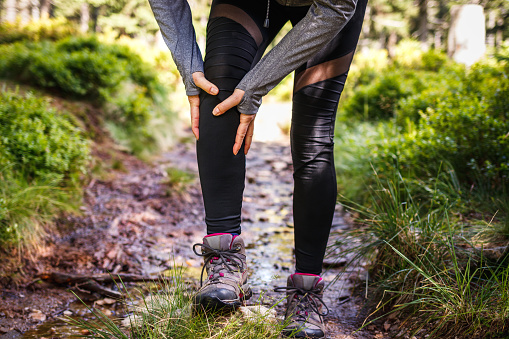
Your body shows a reaction by dilation of blood vessels around your fingers and hands, resulting in swelling while trekking or while exercising.
Also, your hands and arms swing well below your heart during hiking or trekking. This causes the blood to flow against gravity. The fact that most trekkers carry a heavy backpack accentuates the problem even more. This may cause restriction in the blood flow and result in swelling.
2. Lack of oxygen-
Mostly, high altitude treks such as the Buran Ghati, Rupin Pass, Pin Bhaba trek, and the likes are associated with swelling in hands and feet. As you gain altitude, the lack of oxygen combined with blood pressure changes within the blood vessels may cause leakage of fluid into the brain, resulting in swelling.
This condition mostly occurs at altitudes higher than 8,000 feet (2500 m), especially with people who are not used to living in higher altitudes. Deprivation of oxygen can also lead to acute mountain sickness or AMS that can have serious repercussions, if left untreated.
On the other hand, short and easy treks like the Nag Tibba and Bhrigu Lake do not take you to higher elevations. The chances of you getting swelling while trekking is minimal on these expeditions.
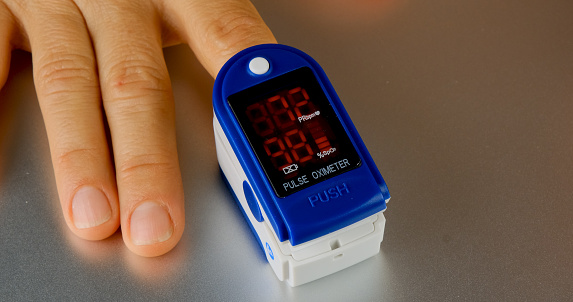
3. Hyponatremia-
We all know the importance of being hydrated. However, some hikers or trekkers drink too much water leading to an imbalance of fluid to salt ratio in their bodies. It is called Hyponatremia, a medical condition where you over hydrate and the salt levels in your body become too low.
Hyponatremia is a common reason for swollen legs after a long hike or whyhands and fingers swell. Hyponatremia is not dangerous unless it causes nausea, confusion, or extreme fatigue. If you experience any of these symptoms, then seek medical help immediately.
4. Menstrual hormones-
In women, a rapid shift of hormones during premenstrual syndrome (PMS) can lead to swelling in fingers and hands. Water retention during these days is a very common symptom that can again cause swollen fingers while walking.
How to prevent swelling of hands while trekking?
You may wonder what swollen hands are a sign of? Is it a medical emergency? Thankfully, swollen legs after a long hike or swelling in fingers is not a medically alarming condition most of the time. But it can be quite uncomfortable and annoying. One can avoid all this with simple techniques and precautions. Let’s just see what this swollen hand treatment looks like.
1. Check the fit of your clothes and other items-
Constriction restricts the blood flow to various parts of the body and may worsen the swelling in hands and feet. Ensure that your accessories/clothing such as the watch strap, rings, bra strap, fit bands, or backpacks are not leaving any pressure marks or dent in your skin.
If yes, then it is a sure shot sign that there is no proper blood flow. Loosen your clothing or accessories if they’re restricting the blood flow. A simple accessory like a finger ring can also contribute to swelling. If you get swollen fingers while trekking then wearing a ring can be extremely uncomfortable. It is wise to avoid wearing any rings or bracelets during hiking.
2. Check your backpack-
Always ensure that the straps of your backpack are not too tight on your body. The backpack straps that are too tight restrict the blood/fluid flow to other parts of your body, past the shoulders. This can lead to a medical condition peripheral edema hiking, which causes swelling in legs and hands because of an irregular flow of fluids in the body.
The easiest way is to wear your backpack properly. It is recommended to keep the weight of your backpack not more than 20% of your body weight during overnight trekking, and below 10% for day treks. Also, keep adjusting the straps so that the backpack is balanced and comfortable throughout your trek. Another good idea is to use a hip belt to evenly distribute the weight, this will help offload some pressure from your chest and shoulders.
3. Use hiking poles-
Even though our hands swing while trekking, we do not engage them as much as required. The best technique is to use hiking poles so that the grip of hands and constant finger adjustment gives enough exercise to your arms. This promotes better blood circulation throughout the whole body. Use of trekking poles also shifts the weight of the backpack from your shoulders as you take each trekking step.
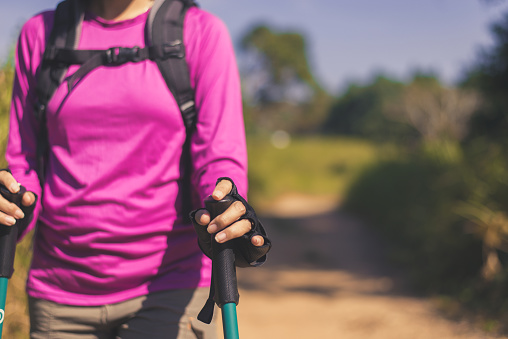
4. Right type of gloves-
Most trekkers who use compression gloves on their outdoor excursion are less likely to suffer from hand swelling. If hiking in summer, use moisture wicking gloves made of light fabric. Use a heavier pair for winter trekking. But you must ensure that the gloves fit snugly and are not too tight fitting.
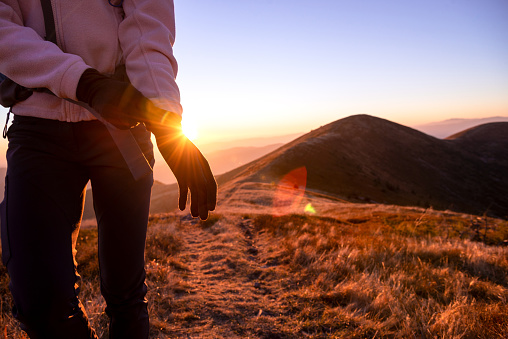
5. Acclimatization-
AMS or altitude mountain sickness occurs if you ascend too fast to a higher altitude. Experts recommend that if you ascend 3000 m above sea level, your body needs at least 1 to 3 days to get acclimatized to changing oxygen levels at this elevation. So, the trick is to spend a few days so that your body produces more red blood cells to counteract the lower oxygen levels at higher altitudes.
6. Exercises-
Swelling in fingers during walking ismainly due to fluid buildup in arms, therefore one can reduce the risk by doing some simple hand exercises.
- Raise your arms above your head. If you're unable to do this exercise for some reason, then prop your elbows above your heart in a sitting position.
- Engage your arms consciously by rotating them in large forward and backward circles as you trek or hike.
- Stretch your fingers and then clench them to form a fist. This will boost blood circulation in your fingers.
- Finger massaging with a gentle wriggling motion is another good exercise. While you massage the finger, try to push down to the center towards your heart.
- Give yourself a regular break to relieve the pressure from your back and hands. You can also do the pressure relief exercises to ease out the pressure of the heavy backpack, if you are carrying one. The best way is to raise your arms and keep your thumbs under your backpack straps to release the pressure from your back.
- For women who experience swollen hands and fingers during their menstrual cycle or before, it is wise to take precautions, if hitting the trails around that time.
- Keep yourself hydrated- Isotonic hydration, also called electrolyte replacement to keep you hydrated is essential during a hike. Keep electrolyte powder, electrolyte solution, or Gatorade handy to keep you balanced. You can also carry electrolyte tablets that dissolve easily in water to avoid carrying that extra weight. Electrolyte chewables or electrolyte pills are other good options. However, observe caution while consuming the electrolyte replacement; always check the dosage as recommended on its packaging according to your age and weight.
- And lastly, ensure that you carry gels and ointments like Voilini for emergency use. Also, if you need an instant sodium boost to avoid cramping of muscles, have salt or mustard packets handy with you.
Conclusion
We hope that with all this information at hand, you can prevent swollen hands and legs during your outdoor excursion to a large extent. So, here’s wishing you good luck and happy backpacking!



